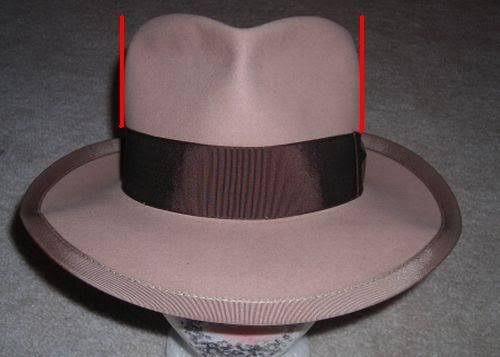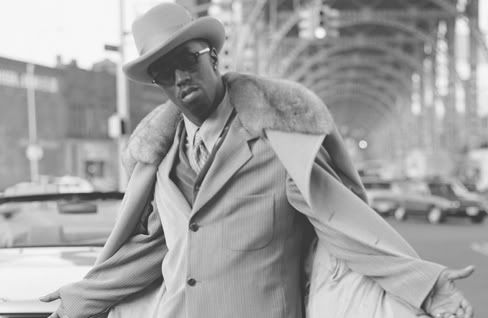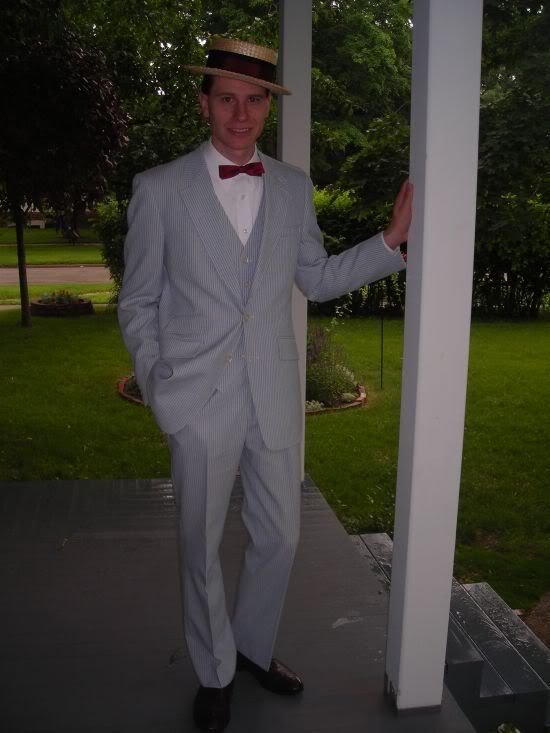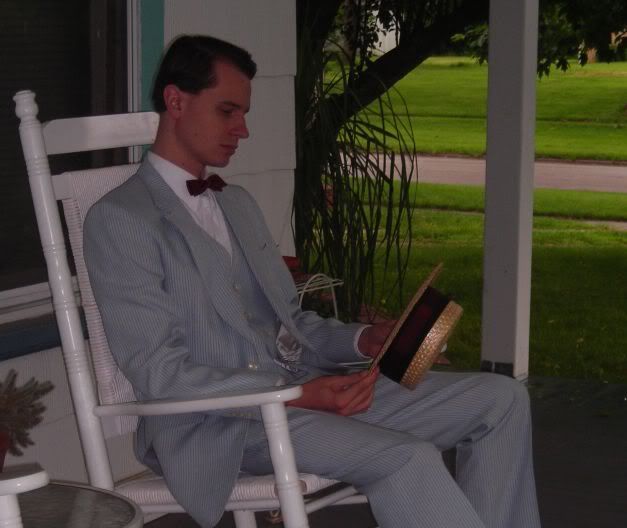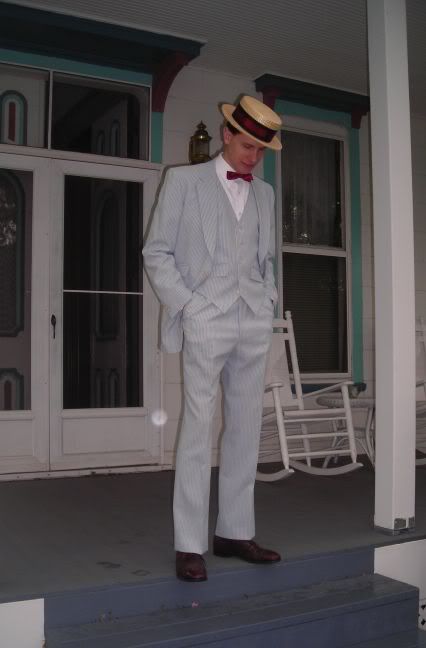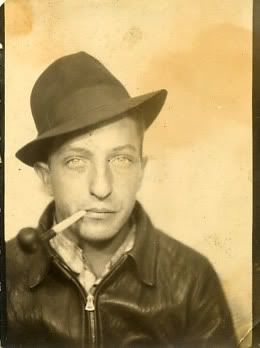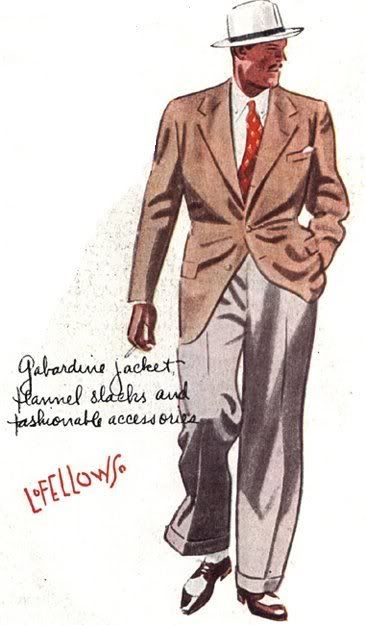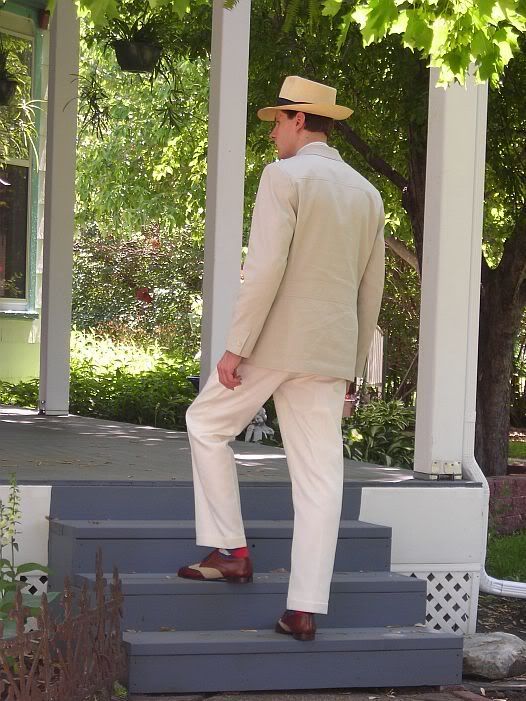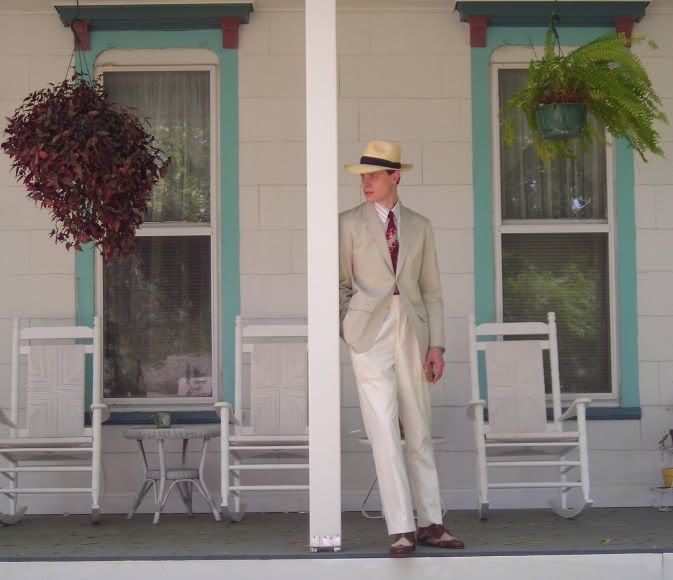
WHY do men behave so badly nowadays? I know that the question has been asked for more than 2500 years, but it just so happens that, this time, it is entirely apposite. The explanation came to me a few months ago in a blinding flash of illumination: the hat. To the hat, or rather to the lack of one, is to be traced the source of all our ill-deportment.Bare heads or heads accoutred in the wrong kind of headgear cause our want of self-respect and therefore our want of respect for others. What we need, therefore, is more hats: proper ones, from cloth caps to trilbies, homburgs, bowlers and toppers.
This revelation came to me in a peculiar way. For years I have bought Victorian era jewellery from a Birmingham, England, jeweller, David Johnson, and he happened to invite me one day to the opening of the new premises of the hat shop he had inherited from his mother, a milliner for more than 60 years. Johnson, developing the family tradition, had decided to branch out into men's hats.
Reflecting on hats, it suddenly occurred to me how much more difficult it was to behave badly in a proper hat and how much easier to be polite in one. I recalled the days of my childhood during which most men wore a hat and I remembered that my father, who was not always the most considerate of men, never failed, in a gesture of genuine politeness, to raise his hat to someone whom he knew. Indeed, the etiquette of hats was drummed into me as a child as being a stage in the taming of the natural savage.
Johnson, too, remembered the age of hats, a gentler age than our own, when men would remove them to acknowledge a passing hearse. A hat, like a cane, gives dignity to a man's bearing, but at the same time affords him the opportunity to practise a little ceremonial. This ceremonial is by definition the recognition of the right of others to due consideration.
The wrong kind of headgear, however, conveys another message entirely. A baseball cap is almost incompatible with an impression of dignity or intelligence and those whose peaks are pulled over the eyes intimidate, as they are no doubt intended to intimidate. The same is true of the hoods that young men pull over their heads and the woollen beanies that cling to their shaven scalps. No ceremonial or recognition of others is possible with this kind of headgear.
Of course, everything depends on cultural context. At one time Hitler wore proper hats (though he seems to have abandoned them as soon as he attained absolute power), as did Chicago gangsters and the politburo of the Soviet Union when it assembled on top of Lenin's mausoleum. Proper hats are thus no guarantee of moral rectitude.
Yet the ethical and social significance of hats has been widely acknowledged. Kemal Ataturk forbade the fez and Gamal Abdel Nasser the tarboosh. The point is not whether they were right to do so but that they believed, by instinct no doubt, that what people put on their heads affected the way they behaved and thought about the world.
Ataturk and Nasser were revolutionaries and they despised their own societies as they had come down to them; they thought that nothing would change until people adopted different headgear, as Peter the Great thought that Russia would remain Muscovy until the upper classes donned European dress.
Communist leaders such as Mao Zedong, Kim Jong-il and Nicolae Ceausescu all affected the workman's cloth cap, though of a subtly different design from real workmen's caps, for, like Princess Diana, they wanted to be simultaneously of the people and completely, metaphysically distinct from them.
Sese Seko Mobutu wore headwear made of leopard skin to imply power and prowess as well as an ability to pounce suddenly and unexpectedly, as leopards do. Leopards are often invisible to their prey until it is too late for them to escape and in Zaire it was widely believed that Mobutu had the power to make himself invisible.
Irrespective of the meaning of proper hats in times gone by, we always live in our own social and cultural context, and the fact is that certain kinds of hats do convey civility and others convey incivility. If you doubt it, conduct a little thought experiment.
You are walking down a dark street at night and a man approaches you wearing a proper hat. Do you fear him as much as you would a man who is wearing a hood or a baseball cap that covers his brow and eyes?
We have become browbeaten by the absurd, dangerous and uncivilised doctrine that if some instances of discrimination are morally reprehensible, all instances of discrimination are morally reprehensible.
A pub in Shropshire recently banned customers from wearing farmer's caps as well as the baseball caps, beanies and hoods that had so often spelled violent trouble, though no one expects trouble from someone wearing a farmer's cap. The fear of being called discriminatory paralyses sensible judgment.
It would be a most interesting study to establish whether an aggressive, hood-wearing young man became less aggressive once shorn of his hood. I suspect that he would.
It may be, of course, that nice men wear hats and nasty men wear hoods. Men wear what is appropriate to their character and according to the message they wish to convey (solicitors wear pinstripes, barristers chalk stripes). The staff of Johnson's shop told me that purchasers of men's hats are invariably polite and charming, which is why they want a hat in the first place. Jamaican men who wear such hats are of the church-going rather than the cannabis and street robbery class.
That civil men should wear hats is much less interesting than if the wearing of hats should make men civil, for this would suggest that the encouragement of hat-wearing might lead to improved levels of public civility. It ought not to be beyond the resources of social psychology to provide experimental evidence as to whether my theory is correct, but it is sometimes necessary in times of crisis to act in advance of the evidence.
Practically all government reforms are carried out with a complete absence of evidence as to whether they will work and on much less plausible hypotheses than mine: for example, that bloated bureaucracies have the public interest at heart and want to solve the problems that have called them into being and are their raison d'etre.
It should not be beyond the wit of the Government to promote the wearing of hats by fiscal and other means. After all, it is constantly pulling legislative levers and pressing fiscal buttons. It could be the beginning of a long overdue cultural counter-revolution.
-------------------------------------------------------------
The premise of the article, while I agree with it, is set in the olden days when 'civilized' men wore 'civilized' hats. There were exceptions to the rule, as the article pointed out, but as a whole it was true. For the most part civility was the rule of the day back when hats were normal. Today we're into 'shock value' and the young mainstream hat wearer follows in lockstep.
Today's hip hop culture has to some extent brought back the hat in it's own image. I fear that today the homburg and fedora is more a part of hip hop culture for a lot of folks than it is a part of a culture of tradition and respect.
I hope Mr. Dalrymple is right but fear the opposite.
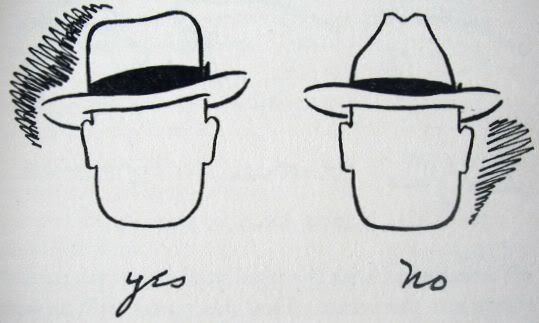 Click here to visit a website that will help you find a style that matches your head shape. Of course, the best way to find the right style is to go out and try on some hats! Look at yourself in a mirror and decide which hat looks best on your head. Ask others what they think. Shop around. Investigate.
Click here to visit a website that will help you find a style that matches your head shape. Of course, the best way to find the right style is to go out and try on some hats! Look at yourself in a mirror and decide which hat looks best on your head. Ask others what they think. Shop around. Investigate. 

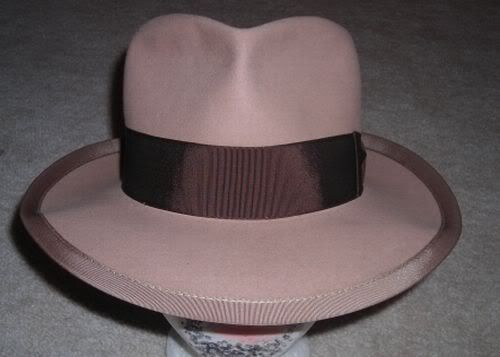 Note that it has a taller crown than the 1960s hat above and it has no taper, perhaps even a bit of reverse taper (where the crown sides expand outward toward the top). This was the style from the 1920s-1950s.
Note that it has a taller crown than the 1960s hat above and it has no taper, perhaps even a bit of reverse taper (where the crown sides expand outward toward the top). This was the style from the 1920s-1950s.